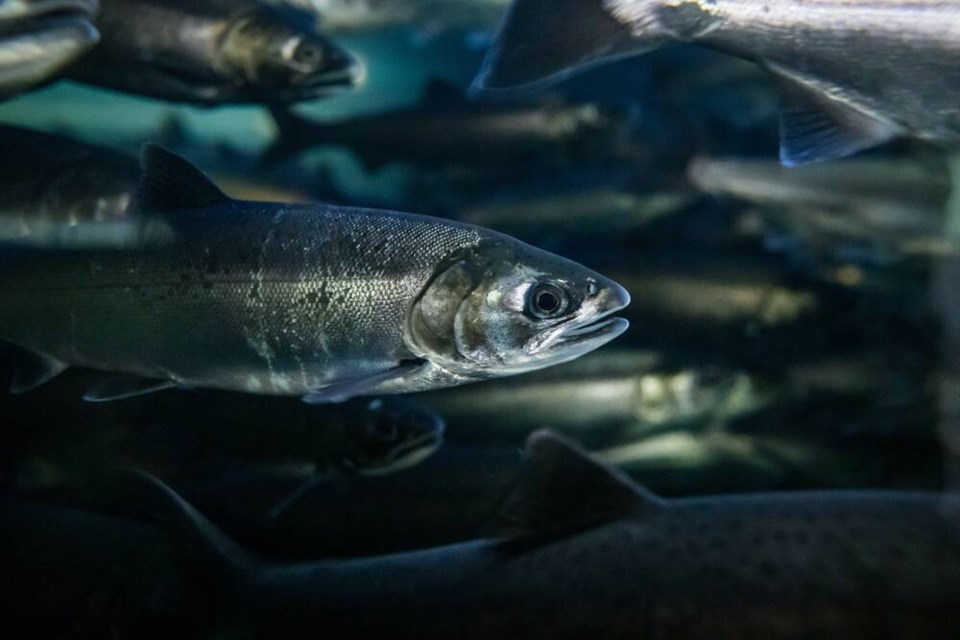A commentary by a former Times Colonist reporter.
Salmon, struggling to reach their home spawning grounds, have little regard for international borders but, for British Columbia fishers, tourism operators and conservation organizations, the invisible line between Alaska and British Columbia is a massive impediment to restoring shrinking salmon populations.
Millions of B.C.-bound salmon and steelhead are killed while migrating through Alaska, with most caught in the outer waters of the Alaskan Panhandle where the Alaskan net fleet fishes for pink salmon.
The Pacific Salmon Treaty is built around regulating the amount of fish caught before reaching spawning grounds in B.C., Oregon and Washington state, but research by conservation organizations shows the number of fish caught before reaching B.C. is growing, with potentially catastrophic effects on depleted and endangered salmon runs.
Watershed Watch Salmon Society estimates that 2.1 million fish of Canadian origin were caught in the Southeast Alaskan fishery in 2022.
The figures show that Alaska is increasingly taking a larger percentage of the total catch, said David Mills, Watershed Watch wild salmon and watersheds campaigner.
Last year, a technical report commissioned by Watershed Watch and SkeenaWild Conservation Trust found that in 2021, when low fish numbers meant 60 per cent of commercial fishing in B.C. was shut down, fishers in Southeast Alaska caught 800,000 sockeye. Most of those fish, according to genetic sampling, originated in B.C. The figures do not include bycatch of species like endangered chinook or steelhead which, unlike Canadian fishers, Alaskans are not required to report.
In comparison, the total sockeye catch in B.C. was 110,000 fish and shrinking salmon runs precipitated a federal fishing licence buy-back program.
A further complication is Alaska’s refusal to curtail a troll fishery in the same location, which a district court found takes food from southern resident killer whales. Rubbing salt in the wound, Alaska markets the salmon as sustainably caught Alaskan fish when the vast majority comes from Canada and Washington State which are co-managing recovery plans for critically endangered killer whales.
The federal government is responsible for Pacific salmon, but the province and Indigenous communities are deeply affected by federal action or inaction.
Several First Nations leaders have called for immediate action to stop the disproportionate Alaskan catch, with Chief Joe Alphonse, tribal chair of the Tsilhqot’in National Government, calling the Alaskan fishery outrageous when the Nation has made huge sacrifices to conserve salmon.
Nathan Cullen, provincial minister of water, land and resource stewardship, whose Stikine riding encompasses iconic salmon rivers such as the Skeena, frequently hears complaints from constituents and believes Canada should be more assertive about the need to balance the fisheries.
The fisheries are interconnected, so conserving struggling stocks is essential for all parties and it doesn’t help if Alaska intercepts 70 or 80 per cent of vulnerable stocks, Cullen said.
Alaskan representatives, with some justification, point to B.C.’s degraded watershed habitat as one reason for plummeting runs — in addition to climate change and unstable ocean conditions — and emphasize that Alaskan fishers are adhering to the rules of the Pacific Salmon Treaty.
The bilateral treaty was signed in 1985 to ensure both countries receive benefits equal to their salmon production, but the question which must be addressed is when conservation concerns should trump existing rules.
The treaty, overseen by the Pacific Salmon Commission, made up of representatives from Canada and the U.S., will not be renegotiated until 2028/2029, which may be too late for some struggling Canadian runs.
Sections of the treaty are reviewed annually. This year’s review included the District 104 fishery on the outer coast, which put the controversy squarely on the agenda. But, so far, Alaskans have indicated they are unwilling to move the fishery to inside waters, saying they are already taking measures to ensure sockeye escapement targets are met.
In addition to seeing the fishery moved to inside waters, Canadian advocates want conservation restrictions on the fishery extended beyond the current late July deadline as timings of B.C.-bound migrations appear to be getting later.
However, Alaskans question whether the migration changes are a long-term trend or an occasional anomaly and, although there is little argument from the U.S about the number of fish caught by Alaskans, there is disagreement on sustainability and whether harvest rates are a threat to the long-term survival of B.C. salmon.
Annual performance reviews allow for interim changes to be made to the Pacific Salmon Treaty and, while all commissioners debate issues, each country then gets one vote.
That means, inevitably, any agreement is going to take intensive negotiation — and strategic arm-twisting.
It will require both sides to keep up the conversation, said John Field, Pacific Salmon Commission executive secretary, with studied understatement.
“It’s not rocket science, it’s much, much harder,” he said.
But, however tough it will be to come to an agreement, pressure from Canada must be maintained.
When sustainability questions and conservation concerns abound, the precautionary principle must kick in. The fish cannot afford to wait.



